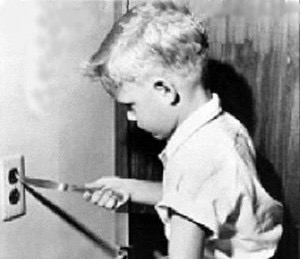
Years ago, during my first stint as a graduate student, I came across the following reflection etched into the wall of a bathroom stall in the basement of the University of Chicago’s Divinity School:
“Thank God for time, otherwise everything would happen at once.”
For this would-be philosopher, everything apparently did happen at once, which is how he came to be sitting in this particular place at this particular time. More importantly, what he hints at is revealing: even allowing for the existence of God, everything we experience in life happens at once, right here, right now, simply because it can’t happen anywhere else.
We live only in the present moment. Past and future are figments of our imagination, narratives our minds fabricate to promote the illusion of a permanent, predictable self-identity we would like to believe persists, unchanged, over time.
For those of us planning our careers, I think our lavatory philosopher’s observation begs an important question. If everything happens at once – as it unquestionably does – why plan anything at all, since the future is an illusion, and an unpredictable illusion at that?
We make plans to wrestle the chaos of the world into some kind of coherence that helps us get things done. Planning allows us to feel as though we’re being productive, that we’re in control. But our plans offer us at best a false sense of security, since the rug can be pulled out from under our feet at any moment.
Plans lead us to believe that what we want to happen really will happen. Of course, what we want to happen occasionally does happen, though not nearly as often as we’d like.
Oliver Burkeman, in his brilliant book “Four Thousand Weeks: Time Management for Mortals,” argues that the greatest source of our unhappiness in life comes from the simple fact that while our time on this planet is limited to 4,000 weeks on average, the different ways we might spend our time and the different choices we might make are unlimited.
This tension, aggravated by the omnipresence of social media, has created the professional scourge of our time – the fear of missing out.
What should we make of this? Here’s my take: let’s accept the fact that the future is an unpredictable fantasy in which anything can and will happen. We should plan our careers to the best of our ability, certainly, but we should hold our plans lightly. We should allow enough space in our plans for unanticipated miracles to occur.
The most influential people in our lives always seem to show up unexpectedly, at exactly the right time. They were never part of our plan, but we welcome them into our lives graciously nonetheless.
People who hold their plans lightly are often people whose lives follow the course of a meander, rather than a steep trajectory up and to the right. They leave room for the unexpected and the unforeseen. They’re by far the most interesting people I know and also, from best I can tell, the happiest.









